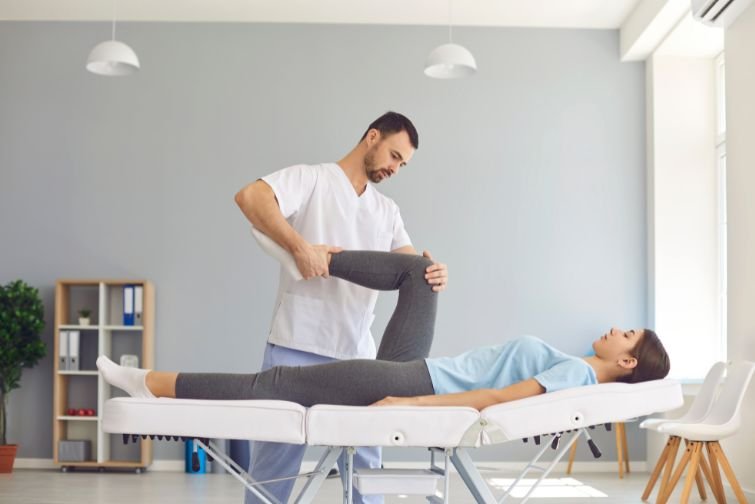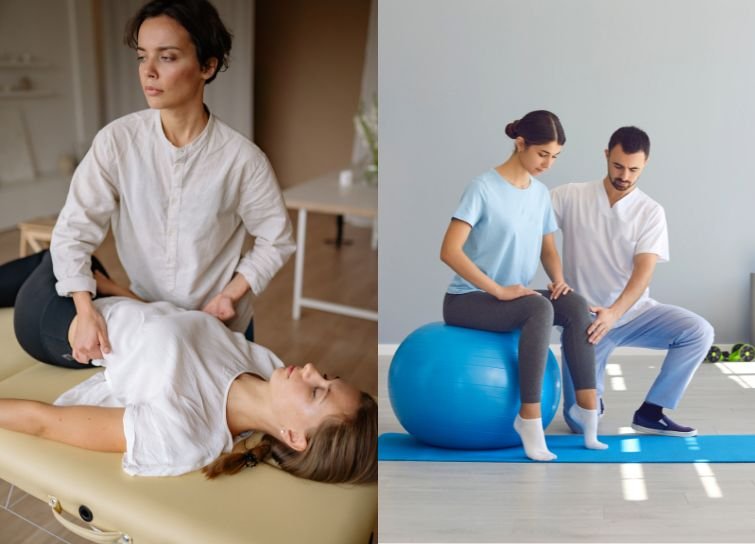What is the Role of Osteopathy in Chronic Pain Management? A Comprehensive Guide
admin
December 28, 2024

The Role of Osteopathy in Chronic Pain Management
Globally, chronic pain is an issue that affects millions of people. Multidisciplinary techniques are often required to manage chronic pain. A holistic, non-invasive method that is gaining popularity in this regard is Osteopathy. Osteopathy is manual therapy focusing on the interconnectedness in the body’s muscular-skeletal system. The treatment is effective in managing chronic pain and can be used when conventional medical therapies fail to provide satisfactory results. In this guide, we explore the benefits of osteopathy treatment in pune in treating chronic pain.
Understanding Osteopathy
Osteopathy is an alternative medicine system which emphasizes the health of musculoskeletal organs. This system of medicine was created by Dr. Andrew Taylor Still, in the early 20th century. Osteopaths use various techniques to help improve the health of your muscles, joints and bones. These include massages, stretching exercises and hands-on manual manipulation. These techniques are not just for pain relief; they can also be used to improve your overall wellness and health.
Chronic Pain Management through Osteopathy
Chronic pain can occur for more than three months, depending on the cause. Pain management techniques that are traditional often use medications, physical treatment, and sometimes invasive procedures. These treatments, while effective for most people, may not treat the underlying cause of the problem and could lead to unwanted side effects. Osteopathy on the other offers a drug free alternative, focusing on both the structural and the functional integrity of your body.
Osteopathy and How It Works
Osteopaths hold that the system of the human body is interconnected and that a dysfunctional part may affect other systems. Osteopaths assess the whole of the body to find the source of pain. Through holistic treatment, osteopaths are able to treat patients in a way that is tailored to their needs. Some of the techniques that are used in Osteopathy include:
- Soft Tissue Techniques: These include massage, stretching, gentle manipulation, and other techniques to improve circulation and reduce inflammation.
- Joint Manipulation: These techniques require moving the joints in their range to reduce pain and increase flexibility. The techniques can be especially effective in conditions like degenerative joints or arthritis.
- Myofascial Release: Hands-on technique to reduce tension in connective tissues that surround muscles and internal organs. It can treat chronic pain caused by muscle imbalances, adhesions, and other factors.
- Visceral Manual: The technique targets the organs as well as the tissue supporting them. The goal is to bring back normal movement and function of the organs.
- Crank Osteopathy: It is a subtle method that relies on light touching of the skull and spine.
It is particularly useful for managing chronic pain because the treatment can be tailored to fit each individual patient. Chronic pain can be better managed by osteopathy, which treats the entire body instead of just one area.
Osteopathy Treatments in Pune
Pune offers a variety of treatment options in osteopathy. The city, which is well-known for its healthcare infrastructure, boasts a vibrant and busy atmosphere. In Pune, you will find a variety of clinics with specialized practitioners. Increased demand for complementary and alternative therapies led to the rise of osteopathy, which is now available in Pune.
You can find an osteopathy treatment in pune near me by conducting an online search for treatment. Some osteopaths will offer a free consultation in order to assess your health history, perform a physical, and then suggest a treatment plan.
Osteopathy and Chronic Pain
- Drug-Free approach. One of the biggest advantages of osteopathy is that it relies more on manual techniques than medications. The drug-free approach is advantageous for patients who may be sensitive to medications or are concerned about side effects.
- Non-invasive: Osteopathy has no invasive procedures, such as surgery or injections. The non-invasive nature of OsteopathyOsteopathy makes it a good option for people who do not want to undergo surgery or would prefer a natural healing approach.
- Holistic Therapy: By treating the body holistically, osteopaths are able to treat pain at its source and not only the symptoms. This may lead to a better quality of life and a lasting reduction in pain.
- Personalized Care: Osteopathic medicine is highly individualized and takes into consideration each patient’s unique needs. This individualized approach allows for the most effective treatment of chronic pain.
- Complementary Other Treatments: Osteopathy may complement other medical treatments, such as chiropractic, physical therapy and rehabilitation. These therapies can be enhanced by using OsteopathyOsteopathy, which is a complementary treatment.
Osteopathy uses a natural, non-drug method to treat chronic pain. This is done by focusing on structural integrity and healing ability. Due to its holistic approach and non-invasive techniques, Osteopathy has become a very popular treatment option in Pune for those who are suffering from chronic pain. You may be suffering from chronic pain. If so, you should consult a trained osteopath about how osteopathy in Pune could help improve your quality of life.
Frequently Asked Questions
What Conditions Can Osteopathy Treat?
Osteopathy has a broad range of applications, from treating back pain to arthritis and headaches. It can also treat sports injuries. Also, it is an effective way to treat chronic pain brought on by tension in the muscles, stress and bad posture.
Can OsteopathyOsteopathy be painful?
Osteopathic treatments do not usually cause pain. The techniques employed are mild and intended to restore function without causing pain. Some patients will feel mild pain during the manipulation. However, this discomfort is only temporary.
How long is it necessary to receive effective treatment?
The length of time between sessions depends on both the severity and personal response to treatment. Some may find relief in just one session, while others will need more sessions. An osteopath’s personalized treatment will be suggested after an initial consultation.
Request a call back
Featured







